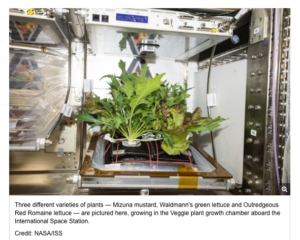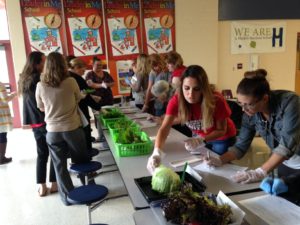Earlier this year, PLANTS partnered with Nutter Fort Intermediate School and the Southern Appalachian Labor STEM Afterschool Program on a Try This West Virginia grant to blend hydroponics with 3D printing. Our grant was selected for funding, and the STEAM Partnership: 3D Printed Hydroponics project got underway in August of 2018.

Our collaborative project engages students in learning how to design, process, and print 3D parts for a Do-It-Yourself (DIY) hydroponic system. Students learn that with hydroponics they can grow vegetables year-round at their schools. Some of the 3D hydroponic parts are designed and made by students using their 3D printing skills.
Teachers Play Key Role in Making Hydroponics Projects Successful
Teachers at both of the schools are also key partners in the STEAM Partnership: 3D Printed Hydroponics project. One of our first steps to bringing teachers into our design and development process was to invite teachers to a hands-on introduction to hydroponics workshop offered at Nutter Fort Intermediate School.
The workshop encouraged teachers to think of ways to incorporate the school hydroponics system into their course activities and learning goals. The workshop began with a brief visual overview of different hydroponic systems and how they can be used to support STEAM (science, technology, engineering, art, and mathematics) learning goals. After a brief discussion about different hydroponic systems, we asked teachers to help us pilot a lesson designed to introduce their students to hydroponics—a salad green taste testing activity.

A summary of teacher feedback and recommendations from the workshop evaluation survey are provided below. A copy of the Power Point presented at the workshop is available here: HydroponicsIntro_lfr.
Following the intro to hydroponics presentation and brief Q and A about hydroponics, teachers were invited to participate in the “Taste Testing” hands-on activity, which followed was developed for this workshop. The salad greens selected for the taste testing activity included: Organic Iceberg, Romaine, Mustard Greens, Green Leaf, Red Leaf, and Spinach. Below are pictures of teachers participating in the Taste Testing activities.
Teacher Recommendations
Fourteen teachers completed the Introduction to Hydroponics – Taste Testing Stations survey. The participating teachers included five third grade teachers, three fifth grade teachers, one fourth grade teacher, one third-fifth special education teacher, one Title 1 teacher, one English Language PK-6 teacher, and two teachers who did not indicate their grade level of focus. Teachers’ area of specialization included English Language Arts (2), reading and math (3), science and social studies (3), English learners, math, science, and writing (1), and all subjects (2).
All of the teachers responded that they would use the Taste Testing Activity in their classes. They also provided several ideas about how they would adapt the activity for their classroom instruction including:
- Use flowers and additional vegetables
- Have the students make predictions before tasting and then write about their tasting experiences in their writing journals
- The hands on structure of this activity ties into math and science
- Expand activity with things for children to do at home
- Incorporate measurements, temperature, growth rate, etc.
- Expand math and vocabulary learning—especially the adjectives used as prompts on the taste testing rubric
- Need larger spaces on the rating form for students
- Some of the lower level students may need vocabulary support
Moving Forward
Based on the feedback from teachers we found that teachers would like to use the Taste Testing activity in their classes. Teachers at different grade levels would adapt and use the activity in their classes to meet different instructional goals. All teachers would like to have access to the activity online. Several teachers suggested that this would be a good activity for a parent night to initiate parent involvement in school activities.
As the STEAM Partnership: 3D Printed Hydroponics project moves forward, the teacher feedback suggests finding ways to enhance and incorporate this introduction to hydroponics activity into classroom teaching and parent’s night events.
